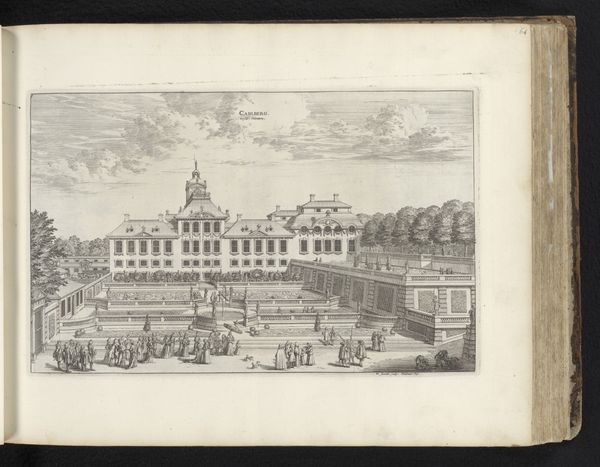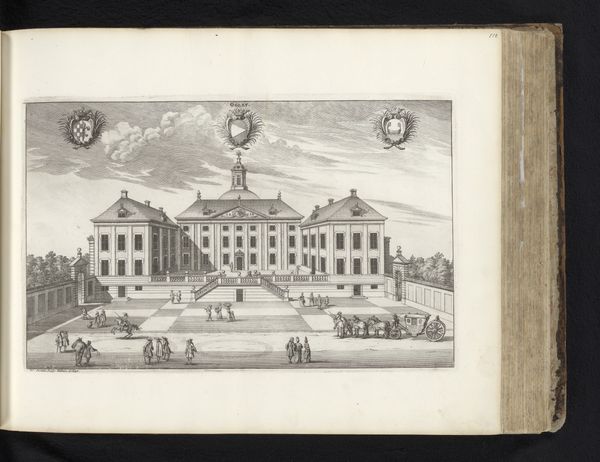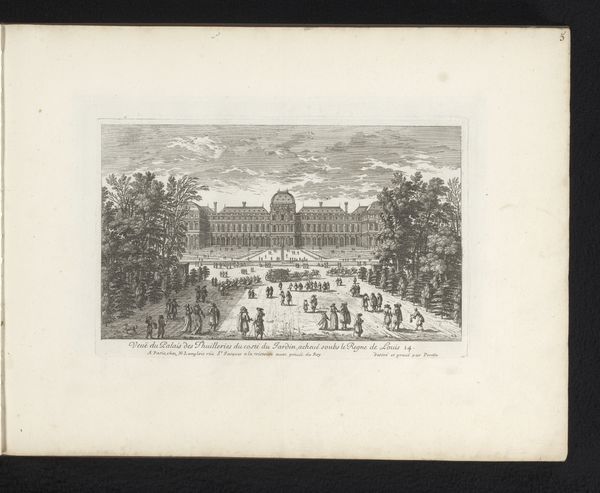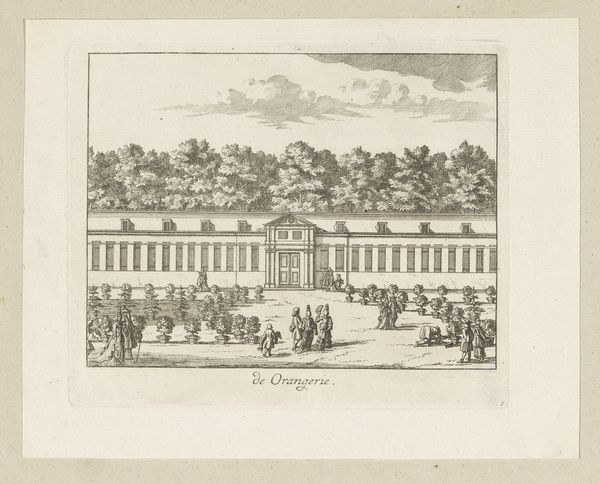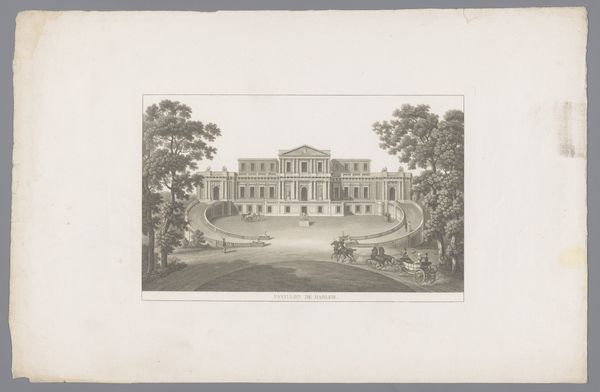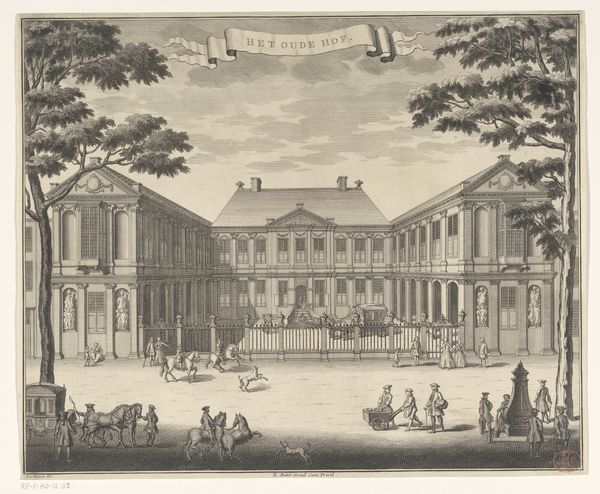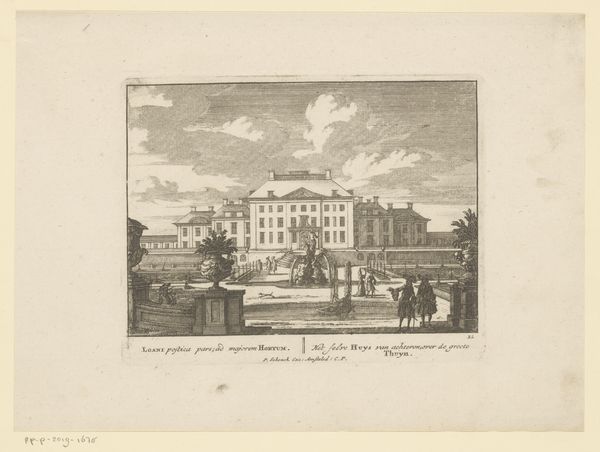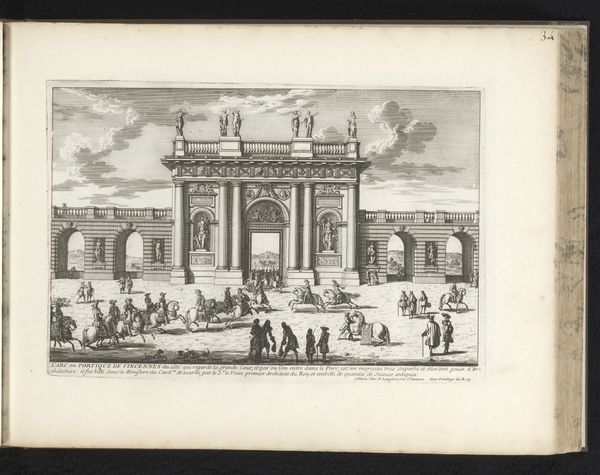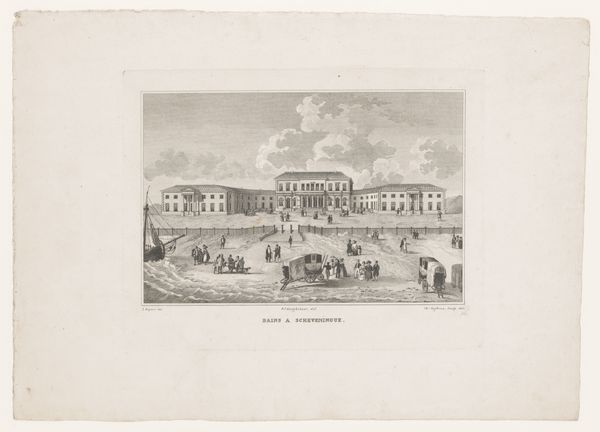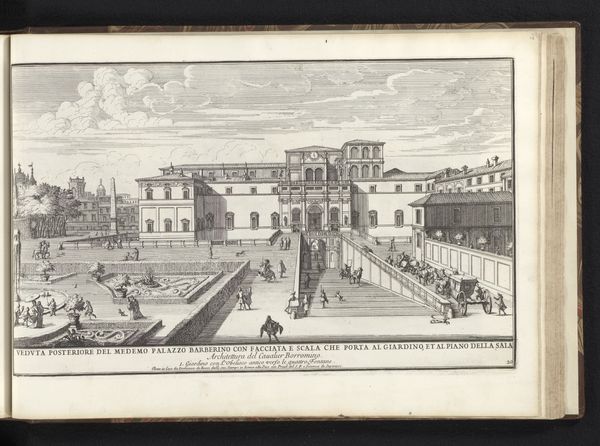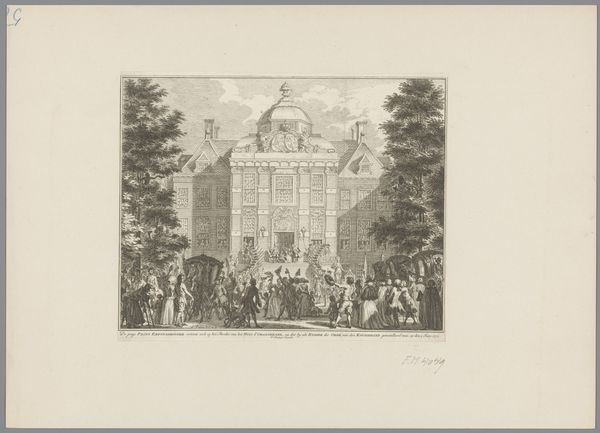
drawing, paper, ink, engraving, architecture
#
drawing
#
baroque
#
landscape
#
paper
#
ink
#
cityscape
#
genre-painting
#
engraving
#
architecture
Dimensions: height 215 mm, width 339 mm
Copyright: Rijks Museum: Open Domain
Editor: Here we have Willem Swidde's 1691 engraving, "Slot Karlberg, vanuit het noorden," made with ink on paper. It gives me a sense of formal order, everything seems very carefully planned out. What do you see when you look at this? Curator: Order indeed! I see the embodiment of Baroque sensibilities, its grandeur captured meticulously. Imagine standing there in 1691; the sheer precision mirrors the era's embrace of reason and control. But it's the figures in the foreground that truly snag my attention. Don't they seem like players on a stage, deliberately placed? Swidde wasn't just mapping a building, was he? Editor: I hadn't thought of it like a stage! What story do you think he’s trying to tell, or perhaps suggest? Curator: Maybe a story of power and civility. The castle, flawlessly rendered, signifies authority. The people, frozen in their elegant postures, symbolize a cultivated society. See how the light dances just so? It highlights their delicate interaction, their genteel orderliness. Think of Versailles; it’s less about brick and mortar and more a symbol of courtly life, of controlled drama. I wonder if Swidde felt like he was directing a play when creating this. What do you think about the scale? The detail versus the large, expansive landscape? Editor: Now that you point it out, it really emphasizes the balance between the grand scale of the building and the intimacy of daily life. I think I understand the connection between architecture and power a lot better now. Curator: That's it! The building isn’t just a backdrop, it's part of the narrative, and that narrative tells you as much about seventeenth century values as any written document could.
Comments
No comments
Be the first to comment and join the conversation on the ultimate creative platform.
